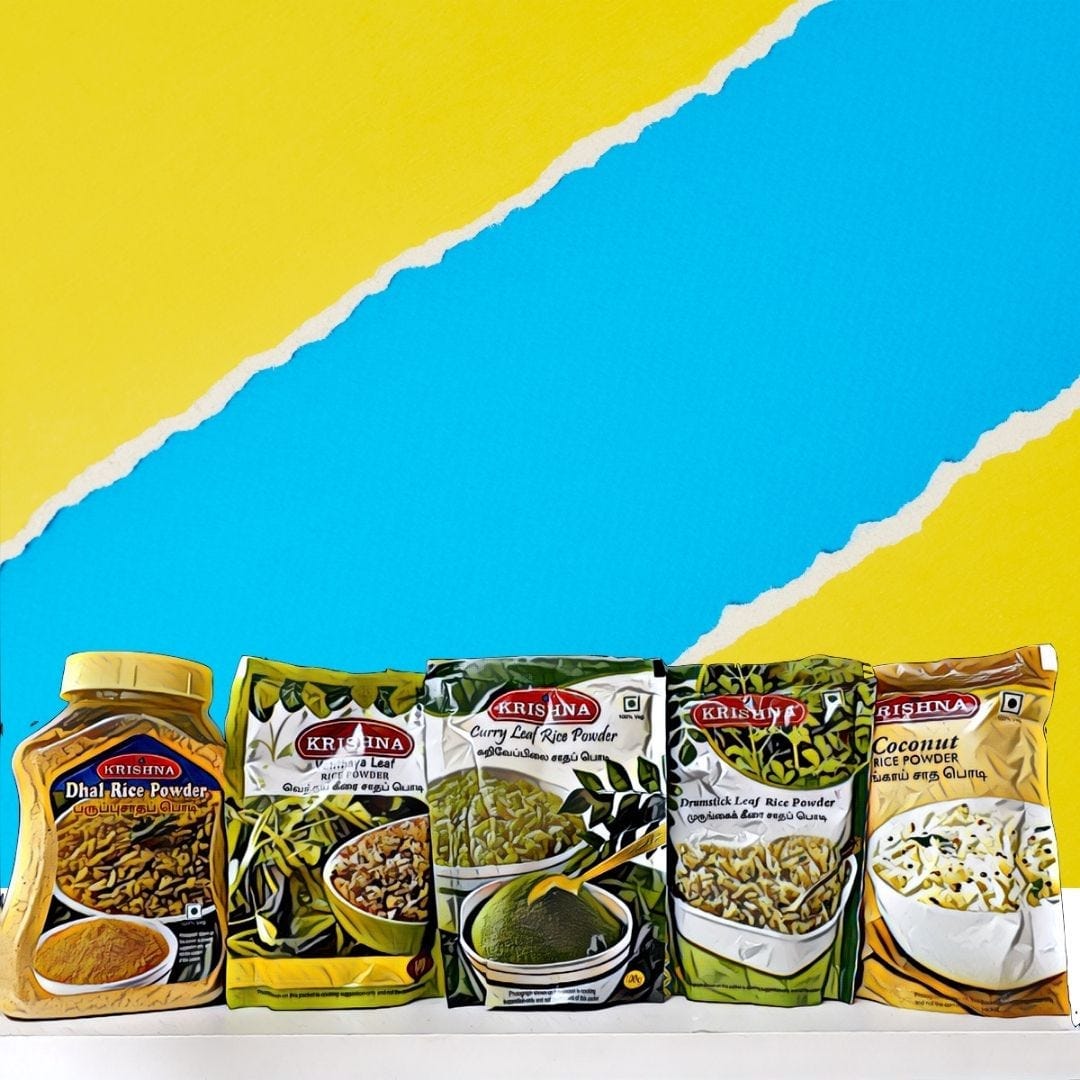I got it from my Amma
But also from MTR, MDH, Aachi, Giri stores, Everest...

Relationships among people are shaped by relationships between people and things, they say.
My relationship with my grandmothers, for instance, was shaped by many things, but chief among them was food. More specifically, their special podis or spice powders.
My Ammamma, my mother’s mother, loved experiments. And I, her faithful guinea pig, tasting all of her quirky recipes - dried Amla + curry leaves ground into powder; ripe mango as the base for a rasam, bitter gourd powder made from the leftovers of bitter gourd juice…
My Paati, my dad’s mother, is the master of the idly-dosai milagai podi - and us cousins would fight for the last morsel of that perfectly balanced mix of dried red chillis, tempered with the nuttiness of peanuts, and enhanced with sesame seeds, coriander seeds, and channa dal.
There are hundreds of go-to recipes for this, the milagai podi/chutney podi/idly podi alone - the main ingredients varying with the region of origin.
My mother’s version leaves out the groundnut and adds a few extra chillis for a true Andhra kick. I’ve tasted versions that hero garlic or asafoetida; that add a bit of jaggery sweetness, others that hero ground coconut. There’s no one set recipe - and this speaks volumes of our varied tastes and cuisines.
There’s also the curry leaf powder, coriander powder, sambar and rasam powder; rice-mix powders made of coconut, eggplant, tamarind (puliyogare) and drumstick leaf; up north, there is the garam masala (some versions containing up to 32 different spices), channa masala, rajma masala, chaat mix… I mean, I could go on.
This dispatch is based on my search for the perfect chutney podi recipe, leading me down my own family’s recipes and to the question - who was the first to think of drying, roasting and grinding fresh spices to preserve and package them?
The Spice Route
Spices and spice powders are synonymous with India. Different theories suggest different origins for spice powders - convenient to ship and trade, the best way to preserve food in the absence of electricity/refrigerators, hand-grinding a mix of spices to ramp up a dish - official resources and written texts are too few to reach a conclusion.
But, the history of the processed powder industry is a lot clearer, finding roots in the post-liberalization era of the early 1990s, after India ended decades of Soviet-style protectionism and opened its markets.
Greater employment opportunities meant more people had less time to pick spices and hand-grind them while cooking. It also meant greater demand from those abroad for a taste of home.
Enter the likes of MTR (The Mavalli Tiffin Rooms) in Bangalore and MDH in New Delhi.
MTR, owned by an Udupi family from coastal Karnataka, specialises in south Indian cuisine., while MDH, or Mahashian Di Hatti, was among the pioneers of ready-to-use ground spices - both are today industries worth crores of rupees, with their products sold both locally and abroad.
The processed podi wave is now at a peak - and it’s not just popular among young professionals and students living away from families but also among the grandmoms and moms for it offers authenticity and convenience at once.
My dad, during a recent visit to his hometown of Chennai, came back not with home-made podis, but with a carton filled with at least nine different store-bought powders, and I jumped with joy - that means a no-cooking week for me.
Convenience vs preservation?
My search for some official research and sources of information for this article led me to dead-ends all around, reflecting how little documentation there is of our spice blends.
The western homogenization of India’s spices, the so-called “Indian spice mix” - does a huge disservice to thousands of spice powders, leading to food writers like Gene Weingarten basing an entire column on “ ewwwing” Indian food on the misplaced notion that hundreds of dishes are made with a single “curry spice” mix.
Recipes are still passed down, yes. Many families still make their spices at home, and young people are trying to recreate a favourite recipe.
But, with more of us naturally opting for the convenience of store-bought podis, are we also contributing to the homogenization of Indian spice mixes, I ask myself guiltily as I continue to empty a packet of curry leaf powder with my Sunday dinner of dosais.
Author’s note: My quest to trace the origins of podis remains. Hit me up if you know of people/books/articles/journals that offer more details.